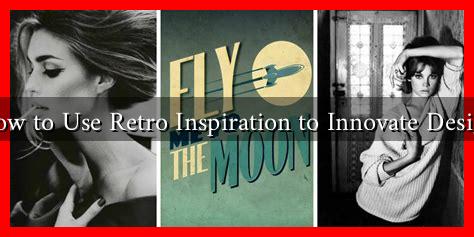-
Table of Contents
How to Use Retro Inspiration to Innovate Design
In the ever-evolving world of design, the past often serves as a wellspring of inspiration for contemporary creativity. Retro design, characterized by its nostalgic elements, can be a powerful tool for innovation. By blending vintage aesthetics with modern functionality, designers can create unique and compelling products that resonate with consumers. This article explores how to effectively harness retro inspiration to innovate design, providing valuable insights and practical examples.
The Allure of Retro Design
Retro design refers to styles and aesthetics that hark back to previous decades, often evoking feelings of nostalgia. This trend is not merely about copying old styles; it’s about reinterpreting them in a way that feels fresh and relevant. The allure of retro design lies in its ability to connect with consumers on an emotional level, tapping into shared memories and cultural references.
Identifying Key Retro Elements
To effectively use retro inspiration in design, it’s essential to identify the key elements that define the era you wish to draw from. Here are some common characteristics:
- Color Palettes: Retro designs often feature bold, vibrant colors or muted tones that reflect the aesthetics of the time.
- Typography: Vintage fonts can evoke a sense of nostalgia and authenticity.
- Patterns and Textures: Geometric patterns, polka dots, and other textures can add depth and interest.
- Materials: Incorporating materials that were popular in the past, such as wood, metal, or glass, can enhance the retro feel.
Case Studies: Successful Retro-Inspired Designs
Several brands have successfully integrated retro elements into their designs, demonstrating the potential of this approach:
- Apple: The design of the iMac G3, released in 1998, featured a colorful, translucent casing that harkened back to the playful aesthetics of the 90s. This design not only stood out in a sea of beige computers but also appealed to a sense of nostalgia.
- Levi’s: The brand has consistently drawn on its heritage, using vintage cuts and styles in its collections. The Levi’s Vintage Clothing line celebrates the brand’s history while appealing to modern consumers.
- Fender: The iconic guitar manufacturer has released several retro-inspired models, such as the Fender Mustang, which pays homage to the original designs of the 1960s while incorporating modern technology.
Innovating Through Retro: Tips for Designers
To effectively innovate using retro inspiration, consider the following strategies:
- Research Historical Context: Understand the cultural and social significance of the era you are drawing from. This knowledge can inform your design choices and help you create a more authentic product.
- Blend Old and New: Combine retro elements with modern functionality. For example, a vintage-style lamp can incorporate LED technology for energy efficiency.
- Engage with Your Audience: Use social media and surveys to gauge consumer interest in retro designs. Engaging with your audience can provide valuable insights into what resonates with them.
- Experiment with Prototyping: Create prototypes that blend retro aesthetics with modern materials and techniques. This experimentation can lead to unexpected innovations.
The Future of Retro in Design
As we move further into the 21st century, the fusion of retro inspiration with modern design will likely continue to grow. The rise of sustainable design practices also opens up new avenues for retro innovation, as designers seek to repurpose vintage materials and styles in eco-friendly ways. According to a report by Statista, the global sustainable fashion market is projected to reach $8.25 billion by 2023, indicating a strong consumer interest in products that combine nostalgia with sustainability.
Conclusion
Incorporating retro inspiration into design is not just about nostalgia; it’s about innovation and connection. By understanding the key elements of retro design, studying successful case studies, and employing strategic approaches, designers can create products that resonate with consumers on multiple levels. As the design landscape continues to evolve, the ability to blend the old with the new will remain a vital skill for any designer looking to make a lasting impact.


